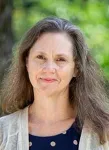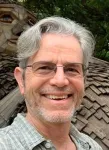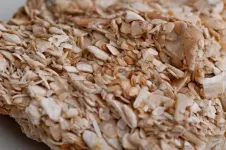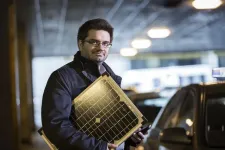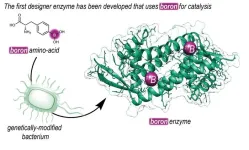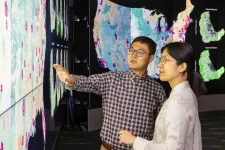(Press-News.org) Each year, the American Association for the Advancement of Science elects distinguished scientists, engineers and innovators to become AAAS Fellows. Seven faculty members from the University of Tennessee, Knoxville, were awarded this lifetime honor as members of the recently announced 2023 class of AAAS Fellows.
Elected faculty are Rigoberto Advincula, Takeshi Egami, Heidi Goodrich-Blair, Sergei Kalinin, Keith Kline, Anthony Mezzacappa and Michela Taufer. They represent a wide range of disciplines across the College of Arts and Sciences, the UT Institute of Agriculture and the Tickle College of Engineering. They join a distinguished group of UT faculty who have been elected AAAS Fellows in past years.
“The AAAS cuts across many, many disciplines, looking at science as a whole,” said Egami, a longtime pioneer in studying atomic-scale dynamics of noncrystalline matter.
The AAAS Fellow designation recognizes people who have made an impact both within and outside their specific fields. “Making an impact on other fields matters. This is an important way we advance,” said Kalinin, who works at the intersection of machine learning and experimental physical sciences. “This is a special honor because we see that our work resonates in the broader scientific community.”
“We are so proud of our newly elected AAAS Fellows,” said Deborah Crawford, vice chancellor for research, innovation, and economic development. “They are pioneers in their respective fields and help ensure that UT remains a world-class research university.”
Rigoberto Advincula, Department of Chemical and Biomolecular Engineering and Department of Materials Science and Engineering
Polymer expert Rigoberto Advincula is the UT-Oak Ridge National Laboratory Governor’s Chair for Advanced and Nanostructured Materials and leader of the Polymer Group at ORNL’s Center for Nanophase Materials Sciences. He is a fellow of the National Academy of Inventors, the American Chemical Society and the Royal Society of Chemistry.
“Becoming an AAAS Fellow highlights not just my contributions but what my group has accomplished,” he said. “We design different types of polymer architectures and nanomaterials. We’re working now with digital manufacturing to enhance performance and sustainability, and to discover new applications such as biotechnologies, parts for connected vehicle technologies like sensors and how to use thin-film coatings to strengthen materials against damage.
“I am passionate about training and mentoring graduate and undergraduate students — the next generation of scientists — to help them have successful careers,” he added. “I aim to help them gain soft skills so they can be confident in choosing STEM as a career, while they build hard skills that industry or academia will be looking for, like how to work with state-of-the-art equipment. For example, I directly involve them with nanocomposites and in 3D printing.”
Takeshi Egami, Department of Materials Science and Engineering
Takeshi Egami is a UT-ORNL Distinguished Scientist, professor, and director emeritus of the Shull Wollan Center/Joint Institute for Neutron Sciences. He is a past recipient of the American Crystallographic Association’s Bertram Eugene Warren Diffraction Physics Award.
Early in his career, Egami realized that most theories and experimental tools in condensed-matter physics and materials science were developed for crystalline materials. “But liquids, glasses and humans, too, are not crystalline. Water in particular is vital for life, yet it’s still a mystery in its physics,” he said. “It is an important target for me.”
Egami developed new approaches to study the atomic structure and dynamics in disordered systems using X-ray and neutron scattering by transforming the data from reciprocal space to real space. He has also developed theories on liquids and glasses.
“I’m grateful to UT, ORNL and the Department of Energy for enabling me to focus on fundamental liquid-state physics,” he said. “I believe it’s important to continue fundamental yet out-of-the-box research to take us to the next stage. Bringing the study of disordered systems into the realm of biology is a new horizon for exploration.”
Heidi Goodrich-Blair, Department of Microbiology
Heidi Goodrich-Blair is the David and Sandra White Professor and head of the microbiology department. She is an American Society for Microbiology Fellow.
“All animals coexist with microbes that are essential to our development, behavior, nutrition and metabolism,” she said. “My work has developed a model system between a soil-dwelling nematode and the bacterium that colonizes its intestine to investigate questions about animal-microbe relationships. For example, at a molecular level, what distinguishes beneficial and harmful microbes? How can we promote the beneficial while combating the detrimental? Using our model, my team has made specific discoveries that provide insights into these types of questions.”
Goodrich-Blair also aims to combat antibiotic resistance by investigating tailocins, which bacteria produce to kill other bacteria. “Tailocins are molecular machines that bind to specific target microbes and punch holes in their membranes,” she said. “If we can harness tailocins, we can kill bad bacteria without harming good bacteria.
“Amazing students and postdocs have made my research and contributions possible,” Goodrich-Blair added. “The women in science in the generation before me, and their stellar scientific contributions, have also helped pave the way for me to succeed.”
Sergei Kalinin, Department of Materials Science and Engineering
Weston Fulton Professor Sergei Kalinin also serves as the chief scientist working in artificial intelligence and machine learning for the physical sciences at Pacific Northwest National Laboratory. Before joining UT, he spent a year with the Amazon special projects team, exploring real-world industry challenges firsthand, and he earlier spent 20 years at ORNL.
“I use machine learning to solve problems in physics,” Kalinin said. “Connecting machine learning with real-world materials and devices requires a combination of skill sets. I have been very lucky to work with strong collaborative teams at the national labs and at UT.
“Together we are integrating machine learning and microscopy to enable a new generation of materials and accelerate the discovery process. It provides what had been a missing link between synthesizing new materials and characterizing them to figure out what we made and why they are useful.”
Kalinin has contributed to multiple types of advanced microscopy including multifrequency scanning probe, electromechanical, piezoresponse force and electrochemical strain microscopy.
Keith Kline, Department of Biosystems Engineering and Soil Science
Keith Kline spent 24 years working with partners on the frontiers of deforestation in Africa and Latin America. “I was fortunate to collaborate with governments and stakeholders to establish systems of protected areas and long-term community management concessions to conserve large tracts of public forests, savannahs and wetlands,” Kline said.
“My work involves helping communities identify opportunities to improve natural resource management based on local needs and priorities. I was raised on a farm. My connections to the land and family who work it complement my international fieldwork and inform my approach to community-based natural resource management.
“I’m looking forward to working with UT and ORNL on water and forest management in East Tennessee communities.”
Kline will also continue research to align land-use change models more closely with science-based parameters and community contexts.
Anthony Mezzacappa, Department of Physics and Astronomy
Anthony Mezzacappa is the Newton W. and Wilma C. Thomas Chair in Theoretical and Computational Astrophysics and a College of Arts and Sciences Excellence Professor. He is also an American Physical Society Fellow and former director of the UT-ORNL Joint Institute for Computational Sciences.
“I focus on understanding our cosmic origins by studying the death throes of massive stars,” said Mezzacappa.
Those events, called core-collapse supernovae, are a source of gravitational waves and many of the known elements. “My group develops the fundamental theory and equations for the evolution of the neutrino particles responsible for generating core-collapse supernovae,” Mezzacappa said. “Then we develop numerical methods to code those equations into software to simulate supernovae.”
His group’s numerical methods have informed research in other fields and applications, including nuclear reactor physics.
Leadership class supercomputers are key for computationally intensive supernova simulations. For more than a decade, Mezzacappa participated in a community of experts advising the Department of Energy on the ongoing evolution and construction of more powerful supercomputers.
“I’m passionate about advancing computational science writ large,” Mezzacappa said. “The honor of becoming an AAAS Fellow feels like recognition for computational science.”
Michela Taufer, Min H. Kao Department of Electrical Engineering and Computer Science
Michela Taufer is the Jack Dongarra Professor in High-Performance Computing. She also serves as editor-in-chief for the journal Future Generation Computer Systems. She has received the IEEE R&D 100 and Technical Community on Parallel Processing Outstanding Service and Contribution Awards, and she chaired the 2019 IEEE/ACM Supercomputing Conference.
“My research focuses on enhancing capabilities and trustworthiness of high-performance computing and cloud computing systems to better support experimental and simulation-based research across various scientific domains,” Taufer said. “My group develops algorithms that increase simulations’ accuracy and ensure they can be validated and replicated.”
Taufer’s interdisciplinary collaborations take a variety of shapes, including creating computation methods to help predict virus replication in fish populations and codeveloping the Quake-Catcher Network to benchmark the accuracy of strategically located low-cost sensors for monitoring seismic events. “My goal is to bridge the gap between computational results and real-world applications, generating scientifically valid and practically useful insights,” she said.
She looks forward to integrating advanced AI and machine learning algorithms into high-performance computing. “This intersection is poised to revolutionize fields like drug discovery, environmental science and materials engineering,” said Taufer.
—
MEDIA CONTACT:
Jennifer Johnson (865-974-4448, jenniferjohnson@utk.edu)
Jen Roder (865-974-2445, jroder@utk.edu)
END
Seven faculty members elected AAAS Fellows
2024-05-08
ELSE PRESS RELEASES FROM THIS DATE:
Human activity is making it harder for scientists to interpret oceans’ past
2024-05-08
New research shows human activity is significantly altering the ways in which marine organisms are preserved, with lasting effects that can both improve and impair the fossil record.
“We are not only changing the environment; we’re also changing the nature of the record that archives this information,” said Michal Kowalewski, the Thompson chair of invertebrate paleontology at the Florida Museum of Natural History. “These changes can be both good and bad. On one hand, human activities ...
Department of Energy announces $160 million for research to form microelectronics science research centers
2024-05-08
WASHINGTON, D.C. - Today, the U.S. Department of Energy (DOE) announced $160 million to advance President Biden’s vision to secure the future of American leadership in semiconductor innovation by implementing a key provision in the historic CHIPS and Science Act of 2022 (42 U.S.C. §19331), Microelectronics Research for Energy Innovation. This funding will support the formation of Microelectronics Science Research Centers (MSRCs) focused on energy efficiency and extreme environments.
For ...
Federico Rosei: international recognition for a researcher at the forefront of his field
2024-05-08
INRS professor recognized for international research and mentoring efforts in nanotechnology.
Federico Rosei, a professor at the Institut national de la recherche scientifique (INRS) in materials science and nanotechnology, has been appointed Materials Research Society (MRS) Fellow 2024 for “his leadership in the nanomaterials synthesis and characterization and his sustained international efforts in service, mentoring and outreach in the field.”
He thus becomes the first researcher in Quebec and the third ...
University of Groningen chemists produce new-to-nature enzyme containing boron
2024-05-08
Boronic acid has been used in organic chemistry for decades, even though it is not present in any organism. ‘It gives rise to different chemical reactions than those we find in nature,’ explains Gerard Roelfes, Professor of Biomolecular Chemistry & Catalysis at the University of Groningen. His group created an enzyme with boronic acid at its reactive centre and then used directed evolution to make it more selective and to improve its catalytic power. Furthermore, enzymatic reactions are more sustainable than classical chemical reactions, as they take place at low temperatures and without toxic solvents. The study was presented online in the journal ...
Study led by ORNL informs climate resilience strategies in urban, rural areas
2024-05-08
Local decision-makers looking for ways to reduce the impact of heat waves on their communities have a valuable new capability at their disposal: a new study on vegetation resilience.
Scientists at the Department of Energy’s Oak Ridge National Laboratory completed a study of how well vegetation survived extreme heat events in both urban and rural communities across the country in recent years. The analysis informs pathways for climate mitigation, including ways to reduce the effect of urban heat islands.
Vegetation such as trees provide a valuable cooling effect, shading surfaces and deflecting solar radiation while releasing ...
Save the Date: American College of Surgeons Clinical Congress in San Francisco, October 19-22
2024-05-08
CHICAGO – The American College of Surgeons (ACS) Clinical Congress 2024 will take place Saturday, October 19, through Tuesday, October 22, in San Francisco and will feature opportunities for members of the media to learn about the latest evidence-based practices and research in surgery and healthcare.
This year’s Clinical Congress will once again be a hybrid event, allowing reporters to cover the conference onsite or virtually.
Clinical Congress is one of the world’s largest educational meetings for surgeons, ...
Gerry Rubin receives the 2024 Gruber Neuroscience Prize
2024-05-08
Janelia Senior Group Leader Gerry Rubin and Cori Bargmann of The Rockefeller University have been jointly awarded the 2024 Gruber Neuroscience Prize for their pioneering work in elucidating the organization of neural circuits in behavior and developing new genetic tools to advance the field of neuroscience.
The Gruber Neuroscience Prize, established in 2004, honors scientists for major discoveries that have advanced the understanding of the nervous system. The prize is part of the Gruber International Prize Program, hosted by the Gruber Foundation, which honors individuals in the fields of ...
Pore pressure diffusion led to microseismicity at Illinois basin carbon sequestration site
2024-05-08
Pore pressure diffusion generated by carbon dioxide injected underground at a carbon storage site in the Illinois Basin is the likely cause of hundreds of microearthquakes that took place at the site between 2011 and 2012, according to a new analysis.
The modeling study published in the Bulletin of the Seismological Society of America indicates that pressure diffusion along existing faults into the basement rock could have destabilized the faults where the microseismicity—ranging from Mw -2 to 1—occurred, said Ruben Juanes of MIT and colleagues.
There are some similarities between CO2 injection and wastewater injection from oil and gas operations, although globally the ...
New study finds AI-generated empathy has its limits
2024-05-08
ITHACA, N.Y. – Conversational agents (CAs) such as Alexa and Siri are designed to answer questions, offer suggestions – and even display empathy. However, new research finds they do poorly compared to humans when interpreting and exploring a user’s experience.
CAs are powered by large language models (LLMs) that ingest massive amounts of human-produced data, and thus can be prone to the same biases as the humans from which the information comes.
Researchers from Cornell University, Olin College and Stanford University tested this theory ...
NASA’s Webb hints at possible atmosphere surrounding rocky exoplanet
2024-05-08
Researchers using NASA’s James Webb Space Telescope may have detected atmospheric gases surrounding 55 Cancri e, a hot rocky exoplanet 41 light-years from Earth. This is the best evidence to date for the existence of any rocky planet atmosphere outside our solar system.
Renyu Hu from NASA’s Jet Propulsion Laboratory (JPL) in Pasadena, California, is lead author on a paper published today in Nature. “Webb is pushing the frontiers of exoplanet characterization to rocky planets,” Hu said. “It is truly ...

